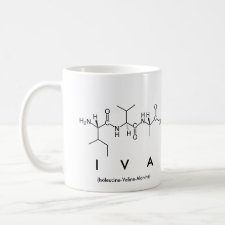
Authors: Yañez F, Chianella I, Piletsky SA, Concheiro A, Alvarez-Lorenzo C
Article Title: Computational modeling and molecular imprinting for the development of acrylic polymers with high affinity for bile salts.
Publication date: 2010
Journal: Analytica Chimica Acta
Volume: 659
Issue: (1-2)
Page numbers: 178-185.
DOI: 10.1016/j.aca.2009.11.054
Alternative URL: http://hdl.handle.net/1826/4160
Abstract: This work has focused on the rational development of polymers capable of acting as traps of bile salts. Computational modeling was combined with molecular imprinting technology to obtain networks with high affinity for cholate salts in aqueous medium. The screening of a virtual library of 18 monomers, which are commonly used for imprinted networks, identified N-(3-aminopropyl)-methacrylate hydrochloride (APMA HCl), N,N-diethylamino ethyl methacrylate (DEAEM) and ethyleneglycol methacrylate phosphate (EGMP) as suitable functional monomers with medium-to-high affinity for cholic acid. The polymers were prepared with a fix cholic acid:functional monomer mole ratio of 1:4, but with various cross-linking densities. Compared to polymers prepared without functional monomer, both imprinted and non-imprinted microparticles showed a high capability to remove sodium cholate from aqueous medium. High affinity APMA-based particles even resembled the performance of commercially available cholesterol-lowering granules. The imprinting effect was evident in most of the networks prepared, showing that computational modeling and molecular imprinting can act synergistically to improve the performance of certain polymers. Nevertheless, both the imprinted and non-imprinted networks prepared with the best monomer (APMA HCl) identified by the modeling demonstrated such high affinity for the template that the imprinting effect was less important. The fitting of adsorption isotherms to the Freundlich model indicated that, in general, imprinting increases the population of high affinity binding sites, except when the affinity of the functional monomer for the target molecule is already very high. The cross-linking density was confirmed as a key parameter that determines the accessibility of the binding points to sodium cholate. Materials prepared with 9% mol APMA and 91% mol cross-linker showed enough affinity to achieve binding levels of up to 0.4 mmol g-1 (i.e., 170 mg g-1) under flow (1 mL min-1) of 0.2 mM sodium cholate solution
Template and target information: bile salts, sodium cholate, cholic acid
Author keywords: computational modeling, cholic acid, Freundlich isotherm, molecularly imprinted polymer (MIP), Trap systems



Join the Society for Molecular Imprinting

New items RSS feed
Sign-up for e-mail updates:
Choose between receiving an occasional newsletter or more frequent e-mail alerts.
Click here to go to the sign-up page.
Is your name elemental or peptidic? Enter your name and find out by clicking either of the buttons below!
Other products you may like:
 MIPdatabase
MIPdatabase









